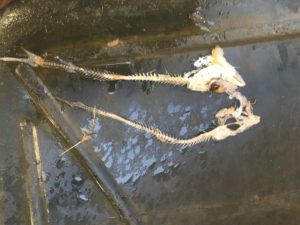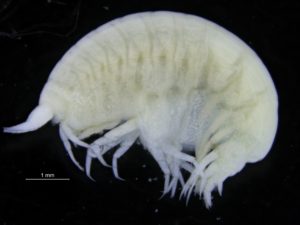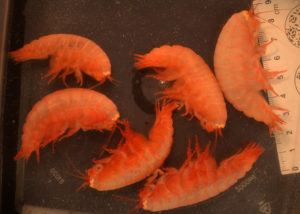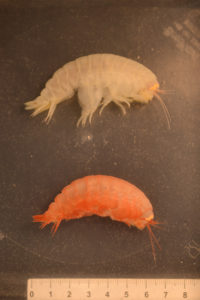Most animals are sloppy eaters. They have their favourite piece of food that they go for, and then they leave the rest. This allows for others to pick up where others leave. One of the laws of ecology is that “there is no such thing as an empty ecological niche”. That can be translated to “where there is a food-source (or a place to live) someone or something will use that food-source (or place to live). And that gets us to the sloppy eaters out there, and not least the animals picking up after all the sloppy eaters.
From the pigeons crowding under your cafe-table for your panini-crumbs to the rats in our sewers, our “local scavengers” tend to be animals we feel slightly uncomfortable around. Is it different with the scavengers we dont see so often? It does not seem that way. Vultures are not the most popular birds, even the word “vulture” has a negative connotation – and we mainly use it in its non-bird meaning.
How about the scavengers of the sea? As on land, we have many different animal-groups that can be classified as scavengers. Many of the marine scavengers are invertebrates (even if some fishes also scavenge). Let us look at the scavenging Lysianassoid amphipods. Are these as little loved in our world as the rats and vultures seem to be?
Lysianassoid amphipods can mostly be distinguished from other amphipods by their “telescope-like” antennae: a very fat inner article with the two next looking like a collapsed old fashioned radio-antenna; two short rings. We know that the antennae of crustaceans are often used to “smell” things in the water – food or mates or possibly even enemies. It is not thought that the radio-antenna-shape of the Lysianassoid antenna specifically has to do with being a scavenger, as other amphipods and indeed several other crustaceans not having such an antenna are also scavengers. But most Lysianassoids have that antennae, and it makes for an easy first-sorting for the scientist. (Getting further – towards a genus, or even species name on the other hand, is not so easy).
Other general traits in most Lysianassoids, are the smooth exterior, and their high swimming abilities. Both are good if you need to get to some leftover food-source fast, and to “dive” into the food-source while not getting stuck through the entry.

Leftovers of bait (polarcod) after 24 hrs in the trap. Not much left for dinner… Photo: AHS Tandberg
And this is where many Lysianassoids loose out when it comes to human appreciation. They seem to love to scavenge on fish caught in fishnets and traps, and both professional and hobby fishers don’t like to share their catch. We dont think it is very appetising to find our fish-dinner “infested” by non-fish. I am quite sure the scavengers being pulled up with their lovely find of dead or dying fish also are not pleased with having to share their dinner with us.
Lysianassoid scavenging amphipods are the focus of our NBIC-financed project NorAmph2. Here, we will collect and register what different species are present in Norway, and we will try to barcode them. These are quite tricky animals to identify properly, but luckily we have teamed up with the best lysianassoid-expert we know – Tammy Horton from the National Oceanography Centre in Southampton, UK.
- Antarctic deep sea scavenging amphipods
- Two different colours of the same species or two diffferent species? From Kong Haakon VIIS HAv, Antarctica. Photo: AHS Tandberg
We use baited traps to collect: put some lovely, smelly fish out there and see who comes to dine. So far, we have collected from Svalbard in the north to Kong Haakon VIIs Hav in the south, and from the intertidal to the deep. They are often many, and the size-variation is great. We look forward to continuing finding out what species we have, and to see if what morphologically seems one species really is (only) one species genetically. (This previous blog-post (in Norwegian) tells the story about one scavenging amphipod that turned out to be 15 (or maybe even more!) separate species)
Anne Helene




